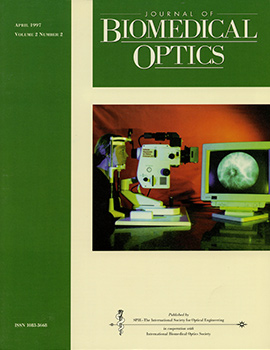Rudolf Walker, Manfred Ostertag, Alexander van der Meer, Thomas Bende, Karl Schmiedt, Benedikt Jean M.D.
Journal of Biomedical Optics, Vol. 2, Issue 02, (April 1997) https://doi.org/10.1117/12.268951

TOPICS: Laser ablation, Absorption, Cornea, Data modeling, Free electron lasers, Tissues, Laser tissue interaction, Thermal modeling, Natural surfaces, Pulsed laser operation
The ablation depth and collateral thermal damage for pulsed infrared photoablation as a function of wavelength with the free-electron laser (FEL) at 10.1, 11.8, 12.8, and 14.5 mm wavelengths is investigated. FEL data are compared with the blow-off and the continuous ablation models. Porcine cadaver corneas were used as target material. [Ablation depth per pulse as well as collateral thermal damage (extension of eosinophilic zone at the excision base beyond the irradiated surface) were measured by histologic micrometry.] The experimental data are compared with theoretical calculations for both models. At low water absorption (10.1 mm) the
additional absorption of the cornea was taken into account. FEL data were: energy per pulse between 15.6 and 17.8 mJ, ablation zone around 0.2 mm2, and pulse length 4 ms (macropulse). In this wavelength range an
effective photoablation of biological materials with a high water content can be achieved. The measured FEL
data of ablation depth fail to confirm the blow-off model; they are 3 to 5 times higher than predicted. However, they are in agreement with the continuous ablation model, describing ablation depth sufficiently well (610%). The wavelength range from 11.8 to 14.5 mm is dominated by water absorption; here the ablation depth depends on the water absorption coefficient only, if other parameters are kept constant. At a 10.1 mm wavelength, collagen absorption contributes to the overall absorption of corneal tissue. The ablation depth can only be described by the continuous ablation model; however, the collateral thermal damage pattern can be described by both models (deviation of data 610–25%).



 Receive Email Alerts
Receive Email Alerts